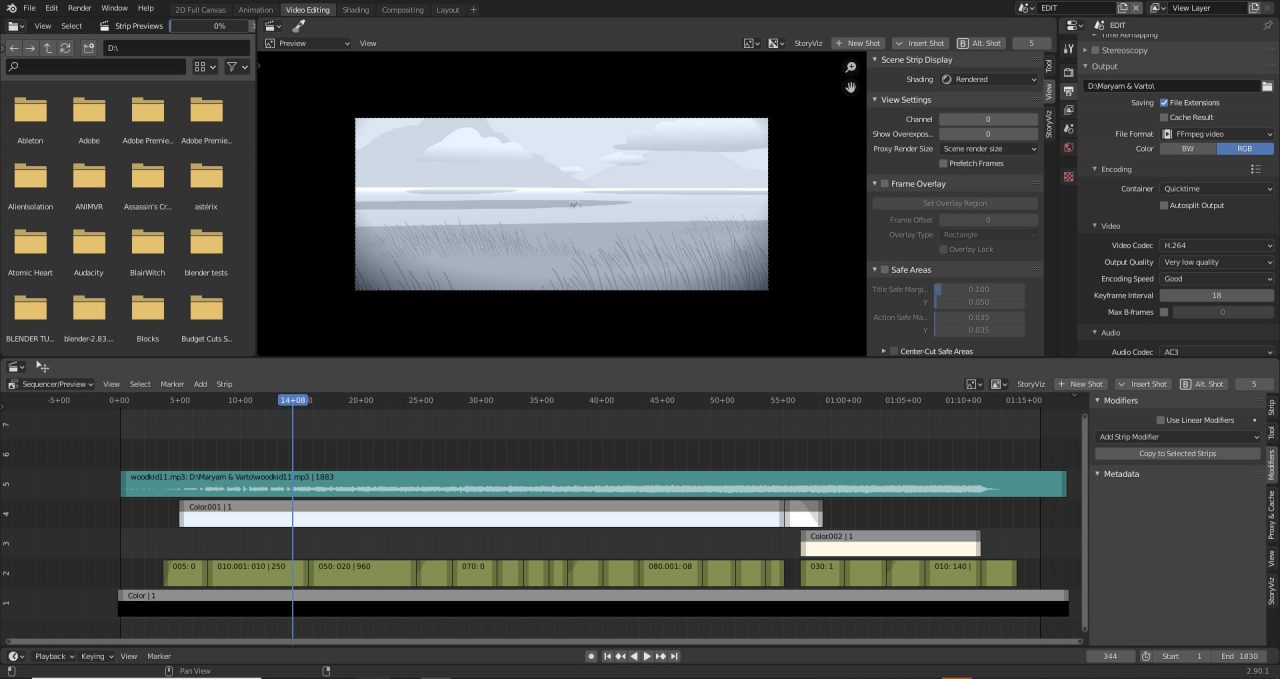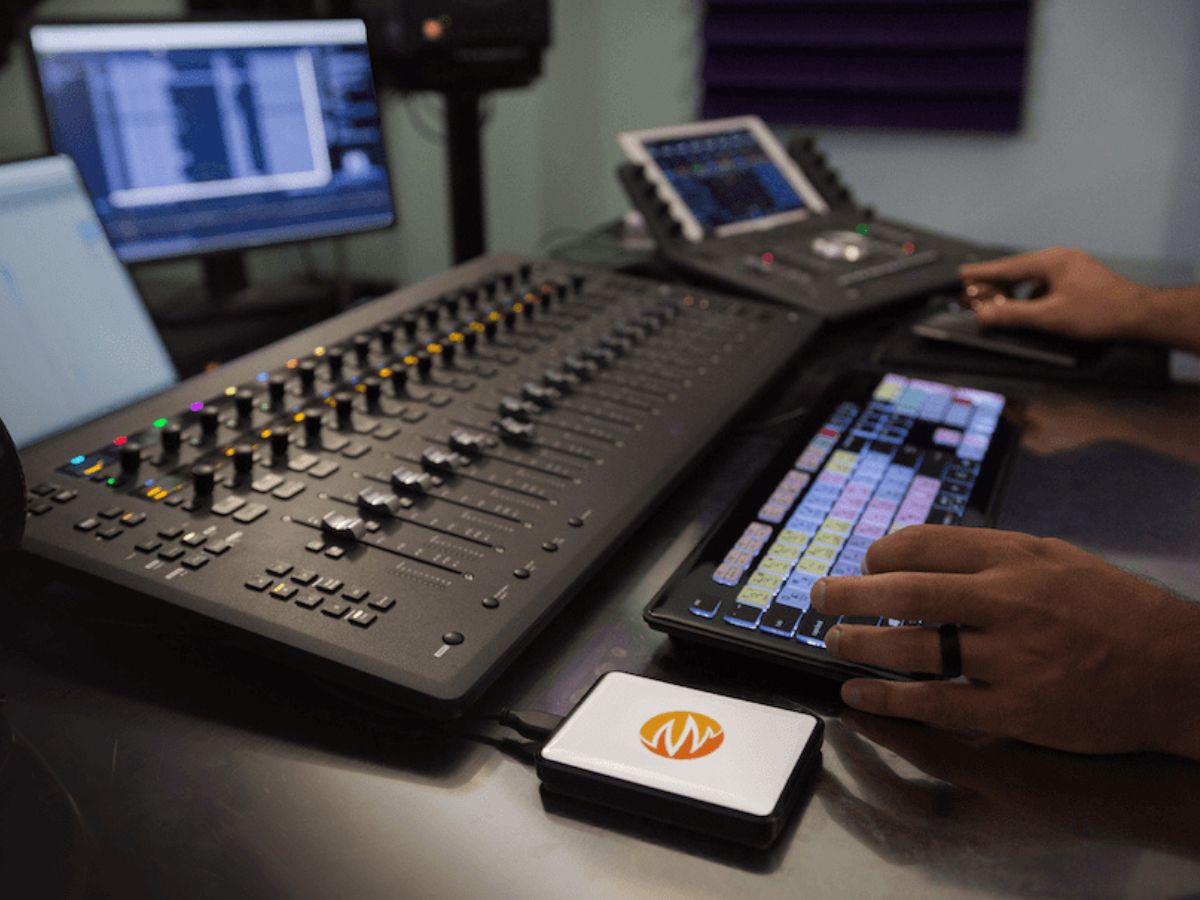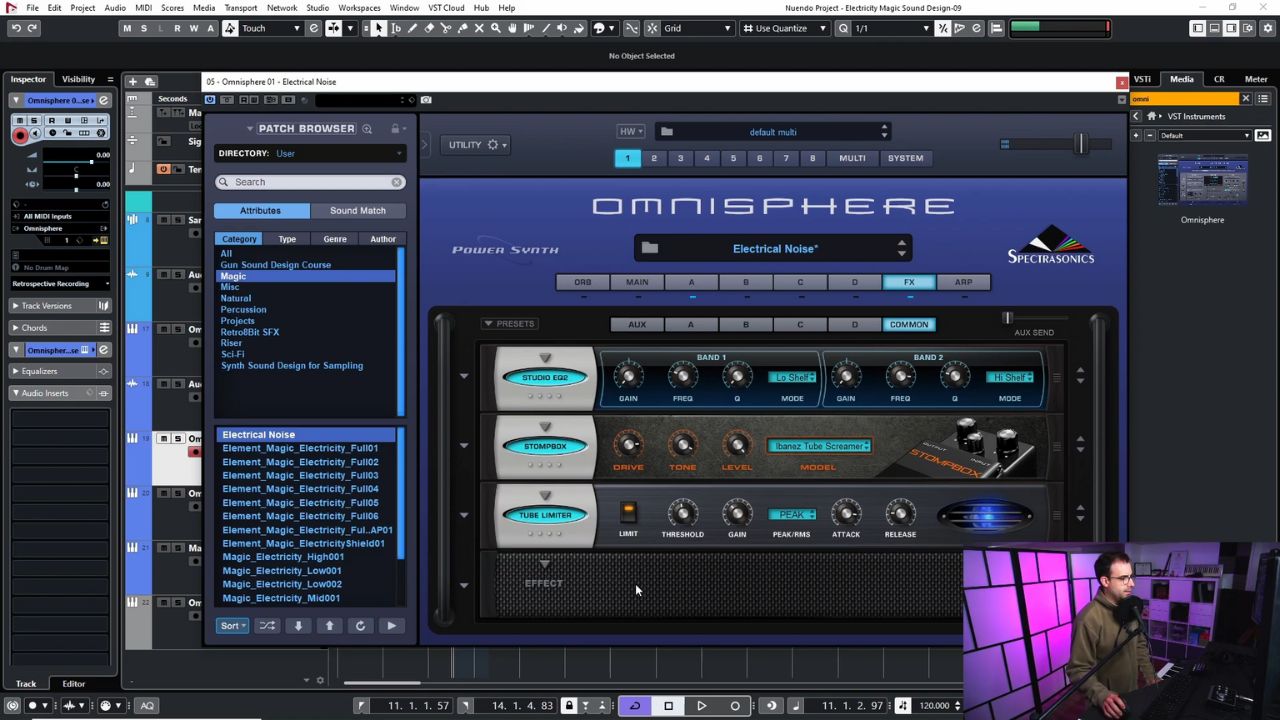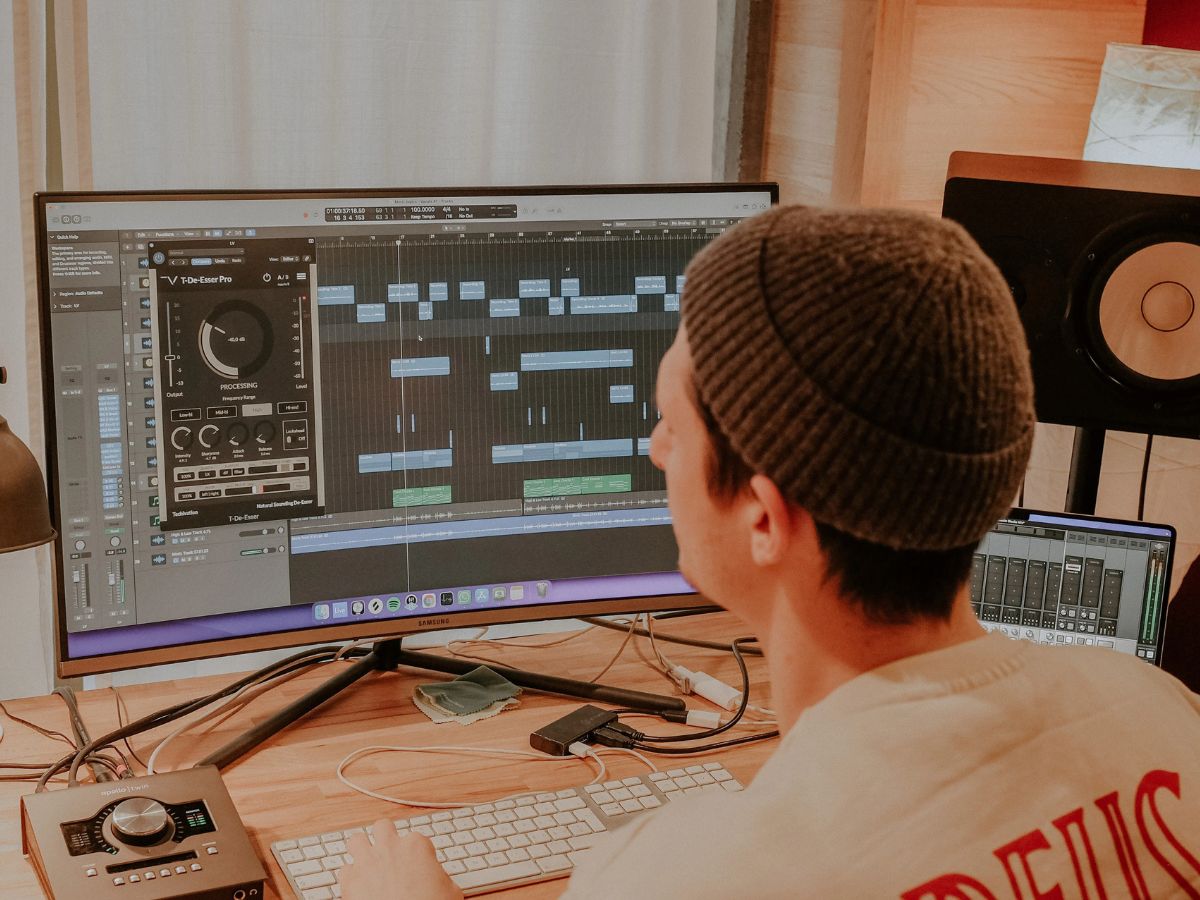Home>Production & Technology>Sound Effects>When Sound Effects Are Recorded And Rranged In Their Order


Sound Effects
When Sound Effects Are Recorded And Rranged In Their Order
Modified: February 16, 2024
Learn how sound effects are recorded and arranged in their proper order to create an immersive audio experience. Discover the art of sound engineering and its impact on various media forms like film, music, and more.
(Many of the links in this article redirect to a specific reviewed product. Your purchase of these products through affiliate links helps to generate commission for AudioLover.com, at no extra cost. Learn more)
Table of Contents
- Introduction
- Importance of Sound Effects in Media
- The Process of Sound Effects Recording
- Preparing and Setting up the Recording Environment
- Selecting and Setting up Recording Equipment
- Capturing Sound Effects
- Post-production Techniques for Sound Effects
- Organizing Sound Effects in a Library
- The Role of Sound Effects in Audiovisual Storytelling
- Arranging Sound Effects in Their Order
- Conclusion
Introduction
Sound effects play a vital role in the world of media, enhancing the audiovisual experience and immersing viewers in the storytelling process. From movies and television shows to video games and online content, sound effects are essential in creating a realistic and captivating atmosphere. Whether it’s the roar of a lion, the screeching of car tires, or the ethereal sounds of a fantasy world, sound effects bring scenes to life and evoke emotions in the audience.
Sound effects are carefully recorded and arranged in their order to create a seamless and cohesive audio experience. This process involves capturing various sounds using specialized equipment and techniques, organizing them in a sound library, and arranging them in a specific order to match the visuals or enhance the narrative.
Understanding the process of sound effects recording and arrangement is essential for sound designers, filmmakers, game developers, and anyone working in the field of audio production. In this article, we will explore the importance of sound effects, the process of recording them, and how they are organized and arranged to enhance the overall audiovisual experience.
Importance of Sound Effects in Media
Sound effects play a crucial role in media by enhancing the overall viewer experience and adding depth to the storytelling process. They have the ability to evoke emotions, create suspense, establish atmosphere, and provide important cues for understanding the narrative. Here are some key reasons why sound effects are essential in media:
- Immersive Experience: Sound effects help transport the audience into the world being portrayed on-screen, whether it’s a bustling cityscape, a warzone, or a tranquil nature setting. They make the visuals more believable and engaging, allowing viewers to feel like they are part of the story.
- Emotional Impact: Sound effects can evoke specific emotions in the audience. The sound of a baby’s laughter, for example, can create a sense of joy, while a thunderstorm can generate tension or fear. By strategically using sound effects, filmmakers and content creators can manipulate the viewer’s emotions and heighten the impact of key moments.
- Enhancing Realism: Sound effects add authenticity to a scene, making it feel more lifelike. From footsteps and creaking doors to explosions and gunshots, realistic sound effects create a more immersive experience and make the audience believe in the world being portrayed.
- Creating Ambience: Sound effects help establish the mood and atmosphere of a scene. Whether it’s the chirping of birds in a serene forest or the cacophony of a crowded market, the right sound effects can transport viewers and immerse them in the desired setting.
- Providing Narrative Cues: Sound effects are often used to provide important cues and information to the audience. The sound of a ringing phone, for example, indicates an incoming call or an impending plot twist. These cues help viewers follow the story more easily and add depth to the storytelling process.
In summary, sound effects are essential in media as they enhance the viewer’s experience, evoke emotions, create realism, establish ambiance, and provide narrative cues. They have a profound impact on how a scene is perceived and can greatly enhance the overall audiovisual storytelling process.
The Process of Sound Effects Recording
The process of sound effects recording involves capturing various sounds using specialized equipment and techniques. This process ensures that the desired sound effects are authentic, high-quality, and suit the specific needs of a project. Here is an overview of the steps involved in the sound effects recording process:
- Preparing and Setting up the Recording Environment: Before recording the sound effects, it is crucial to create a suitable environment. This involves finding a quiet location free from background noise and echo. For indoor recordings, acoustic treatment such as soundproofing and diffusion may be necessary. Outdoor recordings require considering factors such as weather conditions and ambient noises.
- Selecting and Setting up Recording Equipment: The selection of recording equipment depends on the desired sound effects and the budget. Common equipment includes microphones, audio interfaces, headphones, and portable recorders. It is essential to choose the right microphone for each sound effect and ensure they are properly set up and connected to the recording device.
- Capturing Sound Effects: Once the recording environment is ready, the actual recording process begins. This involves performing and capturing specific actions or sounds that are needed for the project. For example, if recording footsteps, the sound designer may simulate different types of footsteps on various surfaces to create a comprehensive library of sounds.
- Post-production Techniques for Sound Effects: After capturing the raw audio, the sound effects are typically edited and processed using digital audio software. This includes tasks such as trimming, cleaning up unwanted noise, adjusting levels, and applying effects to enhance or modify the sounds. Post-production techniques also include layering multiple sound effects to create more depth and complexity.
- Organizing Sound Effects in a Library: To efficiently access and manage the sound effects, they are organized in a library. This can be done using specialized software or manually categorizing and labeling the files. A well-organized sound library allows sound designers to quickly find and use the appropriate sound effects for their projects.
The process of sound effects recording requires attention to detail, creativity, and technical expertise. It is an iterative process of capturing, editing, and organizing the sound effects to ensure they meet the desired quality and are ready to be integrated into the final audiovisual project.
Preparing and Setting up the Recording Environment
When it comes to sound effects recording, preparing and setting up the recording environment is crucial to ensure high-quality and professional results. The recording environment greatly impacts the clarity and fidelity of the captured sound effects. Here are some important considerations for preparing and setting up the recording environment:
- Selecting a Suitable Location: Choose a location that is appropriate for the desired sound effects. If you need to capture outdoor sounds like birds chirping or traffic noise, find a location away from sources of distractions, such as nearby construction sites or heavy traffic.
- Minimizing Background Noise: Reduce or eliminate any background noise that may interfere with the recording. Close windows to minimize outside noise, turn off fans or air conditioning units, and ensure that there are no other noise sources in the vicinity.
- Soundproofing: If recording indoors, consider using soundproofing techniques to minimize echo and external noise interference. This can involve adding acoustic foam panels to the walls, using heavy curtains to block sound, or building a temporary isolation booth for more controlled recordings.
- Controlling Reflections: Reflections can cause unwanted echoes or reverberation in the recorded sound. Use sound-absorbing materials like foam panels or blankets to minimize reflections and create a more controlled recording environment.
- Using Proper Microphone Placement: Position the microphone appropriately to capture the best quality sound. Experiment with microphone placement, distance, and angles to achieve the desired effect. It’s important to consider the proximity effect (the increase in bass response as the mic gets closer to the sound source) and adjust accordingly.
- Monitoring the Recording: Use headphones or monitors to closely monitor the recording as you go. This allows you to catch any anomalies or unwanted noise and make adjustments in real-time.
By taking the time to properly prepare and set up the recording environment, you can significantly improve the quality and realism of the captured sound effects. This attention to detail and meticulous setup ensures that the recorded sounds are clean, clear, and well-suited for the intended purpose.
Selecting and Setting up Recording Equipment
Choosing the right recording equipment is essential to capture high-quality sound effects. The selection and setup of recording equipment depend on factors such as the type of sound effects, budget, and desired level of professionalism. Here are some key considerations when selecting and setting up recording equipment:
- Microphone Selection: Selecting the right microphone is crucial to capture accurate and clean sound effects. Different microphones have different polar patterns and frequency responses, making them suitable for different types of sounds. For example, a shotgun microphone is often used for capturing distant or outdoor sounds, while a lavalier microphone is ideal for recording dialogue or close-up sounds.
- Audio Interface: An audio interface is necessary to connect the microphone to the recording device, such as a computer or a portable recorder. Ensure that the interface has the appropriate inputs and outputs and supports the desired recording quality (sample rate and bit depth).
- Headphones: Good-quality headphones are essential for monitoring the recording and ensuring the captured sound effects are clean and free of unwanted noise. Closed-back headphones are preferred as they provide better isolation and prevent sound leakage from interfering with the recording.
- Pop Filter/Windscreen: To minimize plosive sounds (such as “p” and “b” sounds) and wind noise, consider using a pop filter or windscreen. These accessories help reduce unwanted noises that can affect the clarity and quality of the sound effects.
- Portable Recorder: If you need to record sound effects on location or in outdoor environments, a portable recorder is useful. Choose one that offers high-quality recording capabilities, ease of use, and the necessary inputs for connecting microphones or additional equipment.
- Cables and Stands: Ensure that you have the appropriate cables and stands to securely and properly position your equipment during recording sessions. This includes microphone cables, boom poles or microphone stands, and shock mounts for isolation.
Once you have selected the necessary equipment, it’s important to set everything up correctly. Connect the microphone to the audio interface using the appropriate cables, plug in the headphones, and ensure the equipment is securely mounted on stands or boom poles. Adjust the microphone position and angle to capture the desired sound accurately.
Properly setting up the recording equipment ensures that you can capture the sound effects with clarity and precision. Regular maintenance and care of the equipment are also important to prolong its lifespan and maintain its optimal performance.
Capturing Sound Effects
The process of capturing sound effects involves performing and recording specific sounds to be used in various audiovisual projects. It requires attention to detail, creativity, and the use of appropriate techniques to ensure the desired results. Here are some key considerations when capturing sound effects:
- Research and Planning: Before capturing sound effects, do thorough research to understand the specific sounds you need. Take note of their characteristics, variations, and any unique elements involved. Plan your recording session accordingly, ensuring you have the necessary props, locations, and equipment.
- Performing the Sounds: To capture realistic sound effects, it’s necessary to physically perform or simulate the sounds you need. This can involve actions such as footsteps on different surfaces, door creaks, animal noises, or even capturing the sound of a specific object being manipulated.
- Consider Ambient Noise: Be mindful of the ambient noise present in the recording environment. This background noise can interfere with the clarity and quality of the sound effects. Choose a quiet location, or use soundproofing techniques to minimize unwanted noise.
- Variety and Experimentation: To provide flexibility and options in post-production, capture multiple variations and performances of each sound effect. Experiment with different techniques, angles, and intensities to create a diverse library of sound effects that can be used to enhance the scene or project.
- Recording Techniques: Employ various recording techniques to capture the desired sound effects accurately. This may include close miking for detailed sounds, distant miking for capturing ambiance, stereo or surround recording for a more immersive experience, or using props and Foley techniques to recreate specific sounds.
- Paying Attention to Detail: Focus on the small details that can make a sound effect more authentic and believable. This can involve capturing subtle nuances, textures, or variations in pitch, volume, or speed. These details add depth and realism to the sound effects.
During the recording process, it’s crucial to closely monitor the sound being captured using headphones or monitors. This allows you to ensure the quality of the sound effects, catch any unwanted noise, and make adjustments as necessary.
By capturing sound effects with care and attention to detail, you can create a comprehensive and versatile library that can be used to enhance the audiovisual experience and bring scenes to life.
Post-production Techniques for Sound Effects
Once sound effects have been captured, the next step is to process and enhance them through post-production techniques. This stage allows for fine-tuning and manipulation of the sound effects to achieve the desired result. Here are some common post-production techniques used for sound effects:
- Editing: The raw audio recordings are edited to remove any unwanted noise, clicks, or pops. This ensures that the sound effects are clean and free from distractions.
- Equalization: Equalization is used to shape the frequency response of the sound effects. Adjustments in the low, mid, and high frequencies can enhance or emphasize specific elements in the sound, making them more pronounced or fitting them better within the overall mix.
- Compression: Compression helps control the dynamic range of the sound effects. By reducing the difference between the loudest and softest parts of the sound, compression ensures that the effects stay consistent and balanced throughout the audio.
- Reverb and Delay: Reverb and delay effects can be added to simulate the acoustic environment and create a sense of space around the sound effects. This can enhance their realism or provide a specific ambiance to match the scene or setting.
- Pitch Shifting and Time Stretching: These techniques allow for altering the pitch or duration of the sound effects. Pitch shifting can be used to create unique variations or to match the desired pitch of a specific scene. Time stretching helps to adjust the timing or length of the sound effects to synchronize with the visuals.
- Layering: Layering involves combining multiple sound effects to create a more complex and rich sonic texture. By blending different elements together, layering can add depth and realism to the sound effects.
- Effects Processing: Various effects processors, such as distortion, modulation, or filtering, can be applied to the sound effects to achieve specific creative or stylistic objectives. These effects can add character, interest, or uniqueness to the sound effects.
Post-production techniques for sound effects are typically performed using digital audio workstation (DAW) software, which provides a range of tools and plugins for processing and manipulating audio. It’s important to approach these techniques with creativity and experimentation, while keeping in mind the intended purpose of the sound effects in the project.
By applying post-production techniques to the captured sound effects, sound designers can refine the quality, consistency, and impact of the effects, ensuring they seamlessly integrate into the audiovisual project and enhance the overall viewer experience.
Organizing Sound Effects in a Library
Organizing sound effects in a library is essential for efficient access, management, and utilization of the various audio assets. A well-organized library allows sound designers, editors, and other audio professionals to easily locate and use the appropriate sound effects for their projects. Here are some key considerations for organizing sound effects in a library:
- File Naming and Tagging: Establish a consistent and descriptive naming convention for the sound effect files. This helps in quickly identifying and locating specific sound effects. Additionally, use metadata tags to further categorize and classify the sound effects based on keywords, description, type of sound, and any other relevant information.
- Category and Subcategory System: Group sound effects into logical categories and subcategories to facilitate easy browsing and organization. This can include broad categories like “Nature,” “Technology,” or “Human,” with further subcategories like “Birds,” “Machinery,” or “Footsteps.” Tailor the categories to suit the specific needs and workflow of the audio projects.
- Folder Structure: Create a clear and hierarchical folder structure that reflects the categorization system. Organize sound effect files within appropriate folders and subfolders to maintain a tidy and navigable library.
- Keyword Search Capability: Implement a keyword search capability within the library management software. This enables users to quickly search and retrieve sound effects based on specific criteria, such as keywords, file names, or metadata tags.
- Consolidation and Backup: Regularly consolidate and backup the sound effect library to ensure its integrity and prevent data loss. This can include backing up the library on external drives, cloud storage, or network servers.
- Version Control: For sound effects that undergo revisions or updates, maintain version control to track changes and ensure the availability of different iterations. Implement a systematic naming or tagging system to differentiate between versions of the same sound effect.
- Asset Management Software: Consider utilizing dedicated library management software or digital asset management systems to streamline the organization, search, and retrieval of sound effects. These tools provide features like advanced searching, metadata tagging, batch processing, and integration with digital audio workstations (DAWs).
Efficient organization and management of the sound effects library save time, prevent duplication of efforts, and enhance collaboration among audio professionals. It allows for easy retrieval of specific sounds, promotes consistency across projects, and enables the exploration of creative possibilities within a well-curated repository of audio assets.
The Role of Sound Effects in Audiovisual Storytelling
Sound effects play a vital role in audiovisual storytelling, enhancing the narrative, setting the mood, and engaging the audience on an emotional level. They are the subtle details that bring a scene to life and provide a multi-dimensional experience. Here are some key ways in which sound effects contribute to audiovisual storytelling:
- Sense of Realism: Sound effects create a sense of realism by mimicking the sounds we hear in our everyday lives. From footsteps to door creaks, these sounds ground the visuals and make the audience feel more connected to the story and the characters.
- Setting the Mood and Atmosphere: Sound effects have the power to set the mood and atmosphere of a scene. The sound of raindrops or thunder can create a sense of tension or unease, while gentle background music can evoke a feeling of calm or romance. By carefully selecting and using sound effects, storytellers can shape the emotional response of the audience.
- Enhancing Visuals: Sound effects complement and enhance the visuals, helping to convey important plot points and story elements. The sound of a door opening can reveal the entry of a character or the anticipation of something about to happen. By aligning sound effects with the visuals, the storytelling becomes more vivid and impactful.
- Emotional Impact: Sound effects elicit emotional responses in the audience. A suspenseful, high-pitched sound can intensify a thrilling moment, while a soft, melodic tune can evoke nostalgia or sentimentality. By carefully selecting and timing sound effects, storytellers can enhance the emotional impact of key moments within the narrative.
- Capturing Attention: Sound effects help capture and maintain the audience’s attention. Sudden and unexpected sounds can jolt viewers, keeping them engaged and on the edge of their seats. Sound effects are also used to direct the viewer’s focus to specific elements within a scene, guiding their interpretation and understanding of the story.
- Creating Continuity: Sound effects provide audio continuity throughout a production. From scene transitions to the seamless blend of dialogue, music, and effects, sound effects ensure a smooth and immersive audio experience. They tie various elements of the audio together, maintaining a sense of coherence and cohesion.
Sound effects are a powerful storytelling tool, capable of enhancing the emotional impact, realism, and overall engagement of the audience. They contribute to the audiovisual experience in a way that visuals alone cannot achieve, adding depth, nuance, and a heightened level of storytelling. By skillfully incorporating sound effects into the narrative, audiovisual creators can create a truly immersive and captivating experience for their viewers.
Arranging Sound Effects in Their Order
Arranging sound effects in their order is a critical step in audio post-production. The placement and sequencing of sound effects within a project can greatly affect the overall impact and coherence of the audiovisual experience. Here are some key considerations when arranging sound effects:
- Scene Synchronization: Sound effects should be synchronized with the visuals to create a seamless audiovisual experience. It is essential to time the sound effects accurately to match the actions and movements happening on-screen. This synchronization ensures that the sound effects enhance the visuals rather than detract or create confusion.
- Storytelling and Narrative Flow: Sound effects should support the storytelling and enhance the narrative flow. They can be used to emphasize important story points, enhance dramatic moments, or provide subtle cues to guide the audience’s emotional journey. The arrangement of sound effects should contribute to the overall pacing and rhythm of the audiovisual project.
- Foreground and Background Sounds: Consider the foreground and background elements within a scene. Sound effects in the foreground usually have a higher prominence and are more clearly audible, while background sounds create the ambiance and atmosphere. Arrange the sound effects in a way that balances these elements and creates a realistic and immersive audio environment.
- Transitions and Crossfades: Smooth transitions between sound effects are essential to maintain the continuity and flow of the audio. Using crossfades or other transition techniques can help avoid sudden or jarring changes between different sound elements.
- Layering and Depth: Layering multiple sound effects can add depth, richness, and complexity to the audio. By carefully arranging and blending different elements, such as background sounds, Foley effects, and design elements, sound designers can create a more immersive and realistic audio experience.
- Audio Dynamics: Consider the dynamics and volume levels of sound effects throughout the project. Ensure that there is a proper balance between loud and soft sounds, and that the overall audio mix preserves clarity and intelligibility of the sound effects.
- Emotional Impact: Arrange sound effects in a way that maximizes their emotional impact. By strategically placing impactful or significant sound effects at key moments, storytellers can enhance the emotional response of the audience and create memorable audiovisual experiences.
The arrangement of sound effects is a creative process that involves experimentation, careful listening, and collaboration with the visual elements of the project. It requires a keen understanding of the story, pacing, and intended audience experience. Sound designers and editors continually refine and adjust the arrangement until it satisfies the artistic and technical goals of the project.
Ultimately, the goal of arranging sound effects is to create a cohesive and seamless audiovisual experience that enhances the story, engages the audience, and brings the on-screen world to life through immersive and compelling soundscapes.
Conclusion
Sound effects play a crucial role in the world of media, enhancing the audiovisual experience and immersing viewers in the storytelling process. From capturing and arranging sound effects to organizing them in a library, each step in the sound design process serves to enhance the overall audiovisual storytelling experience.
Sound effects bring scenes to life, evoke emotions, create atmosphere, and provide important cues for understanding the narrative. They have the power to transport the audience into the world being portrayed, whether it’s a bustling city or a fantastical realm. By carefully selecting and arranging sound effects, storytellers can captivate viewers and create a truly immersive audiovisual experience.
The process of capturing sound effects involves meticulous planning, performing, and recording in a well-prepared environment. Post-production techniques, such as editing, equalization, and layering, further enhance the sound effects and ensure their seamless integration into the final project. Organizing sound effects in a library facilitates quick access, efficient management, and enhances collaboration among sound designers and editors.
Sound effects serve as a vital storytelling tool by setting the mood, creating realism, enhancing visuals, and evoking emotional responses. The arrangement of sound effects within a project further enhances their impact by synchronizing them with the visuals, supporting the narrative flow, and creating a sense of depth and immersion.
In conclusion, sound effects are an integral part of the audiovisual storytelling process. Their careful selection, recording, arrangement, and organization contribute to creating compelling, engaging, and memorable experiences for audiences. By harnessing the creative power of sound effects, media professionals can elevate their projects and captivate viewers on a deeper level.











